Text
Настенька и Иванушка - Морозко❄️ (1964)🇷🇺
Nastenka and Ivanushka - Morozko
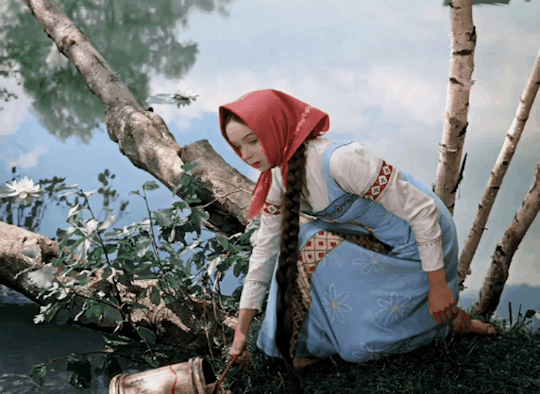
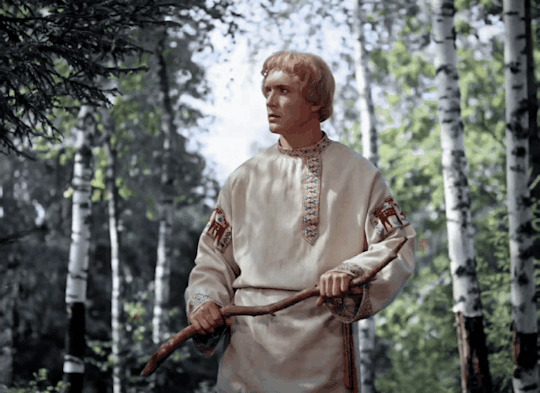
Main characters from the classic, Russian film Морозко. It is traditionally watched every year on New Year's/Christmas. It is based on the folk fairytale Морозко itself❄️

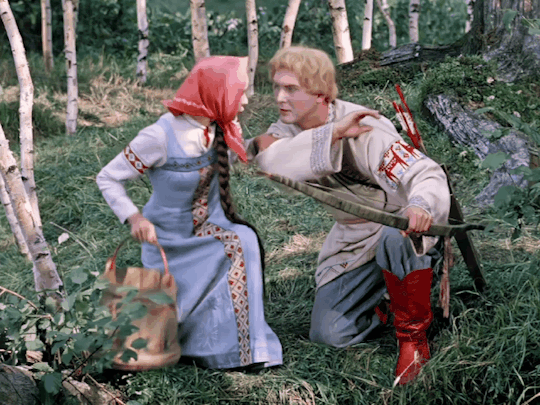
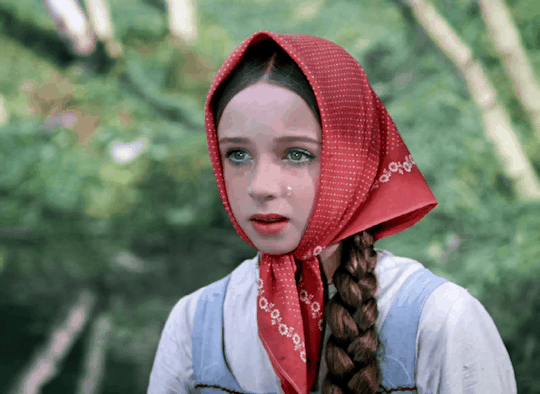
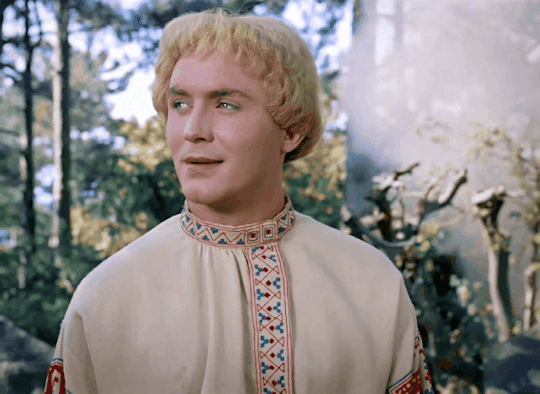
Nastenka and Ivanushka are affectionate forms of the names Anastasia and Ivan in Russian❤️


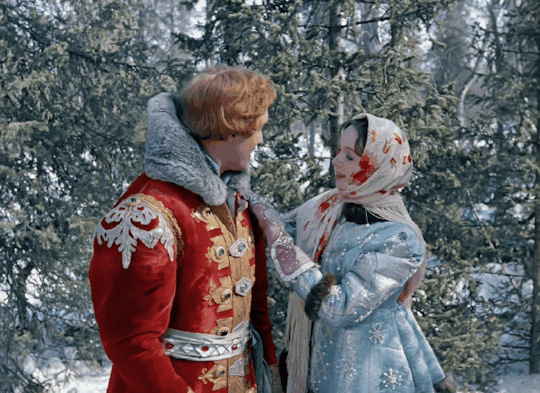
This film is very popular in Czechia🇨🇿 & Slovakia🇸🇰 as well, known as "Mrazík" over there. All have been traditionally watching this for the past 60 years.
Beautiful ending of the film, including wonderful Russian folk singing, I love all the gorgeous traditional attire and ornaments!
(I'll make another post in the future including other characters, can't forget about Marfushenka/Марфушенка and Morozko/Морозко!)
#slavic#slavic culture#folk#folklore#slavic tradition#tradition#traditional wedding#wedding#морозко#фолклор#фолк#дед мороз#иванушка#настенька#иван#анастасия#russian folk#russian traditions#russian folklore#russian#mrazík
19 notes
·
View notes
Text
Rakvice🇨🇿
Some beautiful Moravian dresses/costumes from Rakvice, a village/municipality in the South East of Czechia🇨🇿.
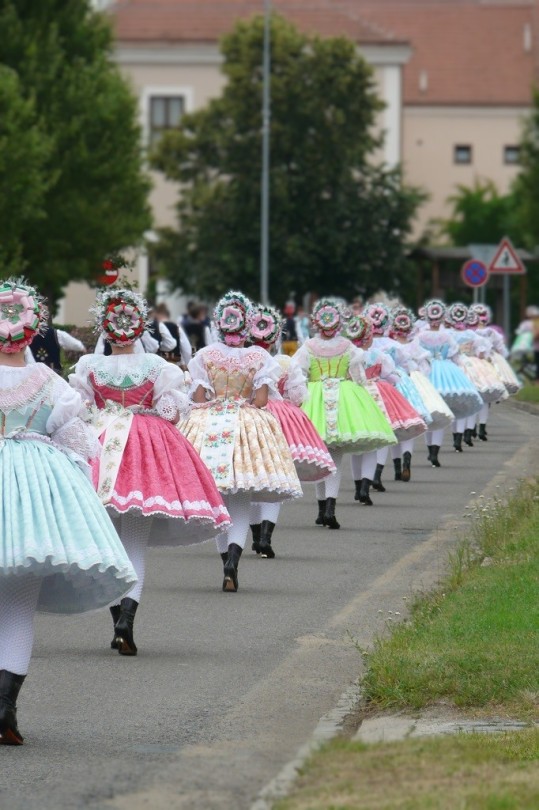

This place has wonderfully preserved their beautiful culture.

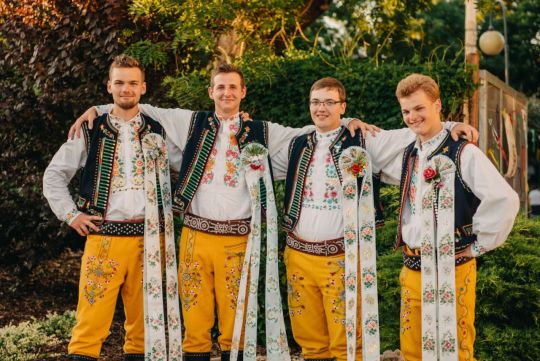
You will notice with Moravian dresses, women tend to have large, puffy dresses with their distinctive huge, wide skirts and abundant petticoats underneath.


In many regions in South Moravia, men's costumes typically include a long white embellished ribbon with a decorated cockade on the right side of their vests as you can see above.


I managed to find some older photos from 1959 too❤️

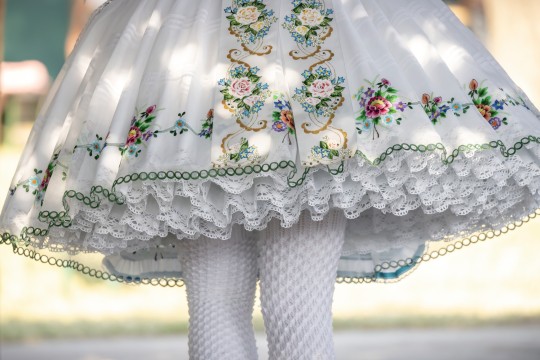
A traditional dress/costume in Czech & Slovak is called a "Kroj" (pronounced like kroi). I love how highly and beautifully embellished each garment is from here❤️
#slavic#slavic culture#folk#folklore#slavic tradition#tradition#czech republic#czechia#czech girl#moravia#czech folklore#czech tradition#moravian folklore#morava#moravian tradition#czech traditional dress#moravian dress
271 notes
·
View notes
Text
Bridesmaids' Farewell🕯️🇸🇰
A clip from "Svadba spod Poľany" (A wedding beneath the hilly fields) by Slovak folk group Lučnica in 1981❤️
It depicts bridesmaids singing about their farewell with the bride from her perspective, during " čepcenie¹ ".
~~~~~
- Unfortunately, the quality has been damaged, but I really love the gentle, doleful singing and music, it truly reflects how the bride is feeling.
(I skipped a verse because there's a word me or anyone I know cannot decipher at all, if anyone understands pls tell me lol😭)
~~~~~
For some girls, a wedding was a depressing event, as they'll no longer have the freedom they've had their whole life up untill then, and will have to start a new life as a mother, housewife and worker.
They would have to leave their friends and family behind, and move into the husband's house, where the wedding took place and from then on, she began her new life.
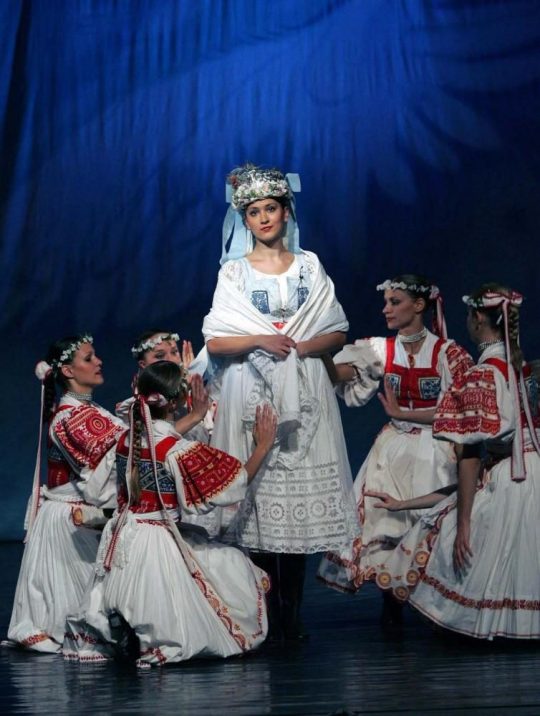

(Note in reference to my previous post, how the unmarried girls have their hair braided and on display, whereas the married women have their hair hidden in bonnets.)
~~~~~
It was a tradition during "čepcenie" for a song to be sung about the bride parting away from her friends, or anything relating to the bride's change of life, often in an intimate setting with candles.❤️

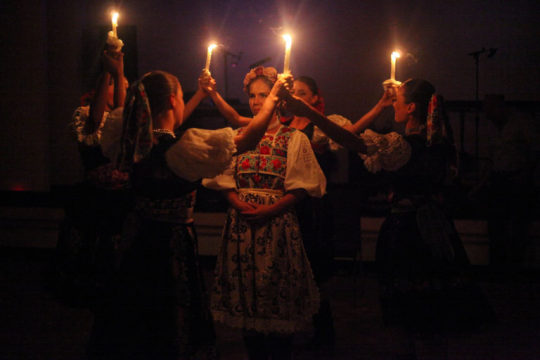
1. "Čepcenie" is when the bride has her wedding headdress taken off and has a bonnet put on, most happened on the following morning, but some had theirs during the wedding.
(More info in my next post + other countries.)
~~~~~
#slavic#slavic culture#folk#folklore#slavic tradition#tradition#slovakia#wedding#traditional wedding
30 notes
·
View notes
Text
Braids & Ribbons🎀
In most Slavic cultures, it was a tradition for unmarried girls to have their hair in braids, and in some cultures, tied with a ribbon too.
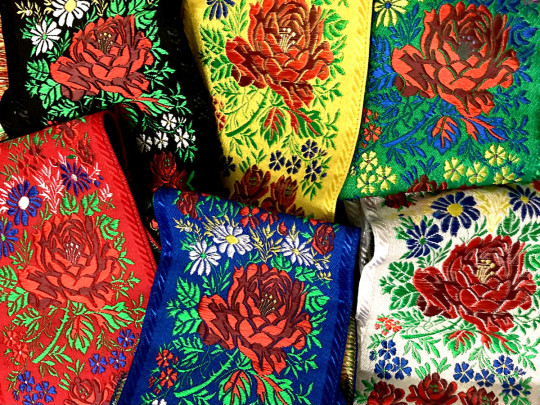

Once a girl got married, she would have to tuck and hide her hair in a headdress, headscarf or cap/bonnet. (I will talk more about this in my next posts❤️)

In many cultures, as part of the marriage ceremony, girls would have their hair braided into two parts, then put into a crown hairstyle as shown above, before finally having their hair covered during or after the ceremony.
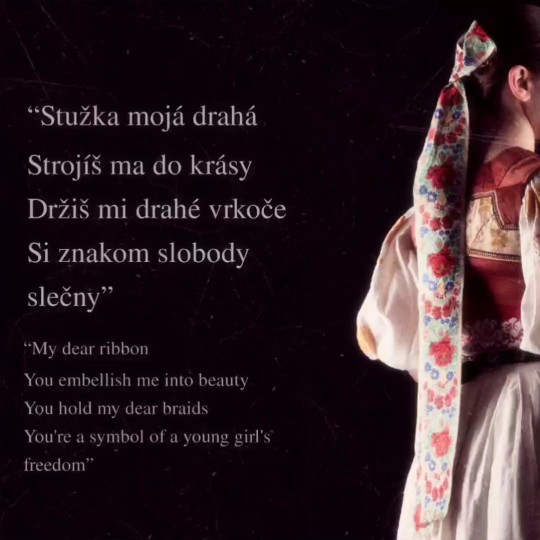

Braids and ribbons can symbolise a young girl's beauty and freedom❤️
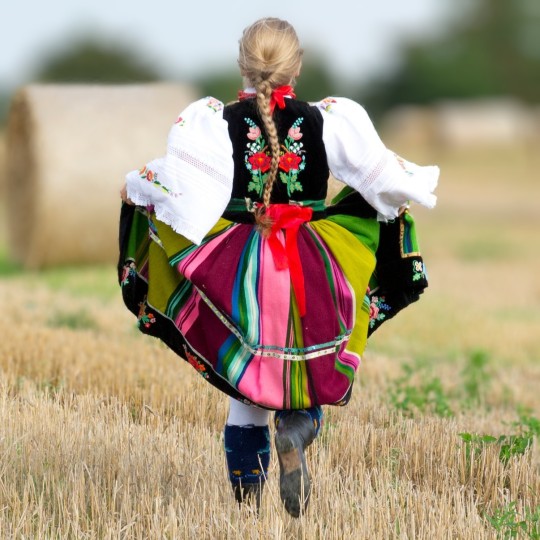

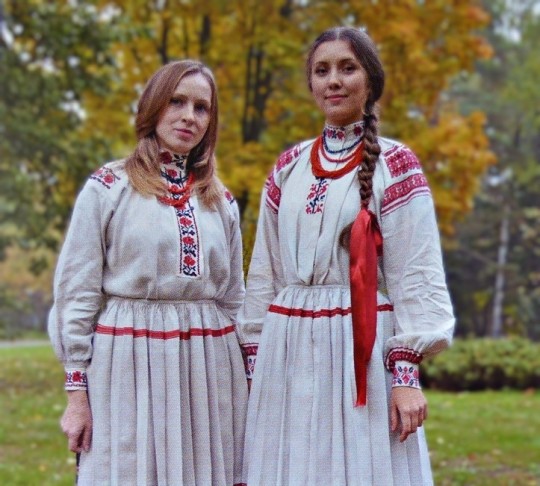
In many areas, ribbons are worn on the tail of the braids as shown above, at the top from the Łowicz region, Poland🇵🇱 & from the Brest (Брест) region, Пружаны, Belarus🇧🇾❤️


An embellished ribbon from Očová, Slovakia🇸🇰❤️
~~~~~~
420 notes
·
View notes
Text
Polish traditional ceremonial dress of Bambers (Bambrzy) 🇵🇱

Photo - St. Garomski
Collection - City Museum in Tychy
The people originally partly descended from Bamberg, Germany and moved to Greater Poland (Wielkopolska) in the surrounding villages of Poznań.
The villages unfortunately got destroyed during the Great Northern War, now their history remains in Poznań❤️


A beautiful tulle headscarf and apron❤️
Photos - A. Cieślawski
Collection - National museum in Poznań
#slavic#slavic culture#folk#folklore#slavic tradition#tradition#polish#poland#polish folklore#polish folk costumes
95 notes
·
View notes
Text
Lidia Ruslanova (Лидия Русланова) singing "Сирень Цветёт" (Lilacs are blooming) during WW2 possibly 1943/44❤️🇷🇺
"Сирень цветёт, не плачь: придёт!"
"Lilacs are blooming, don't weep: he'll come!"
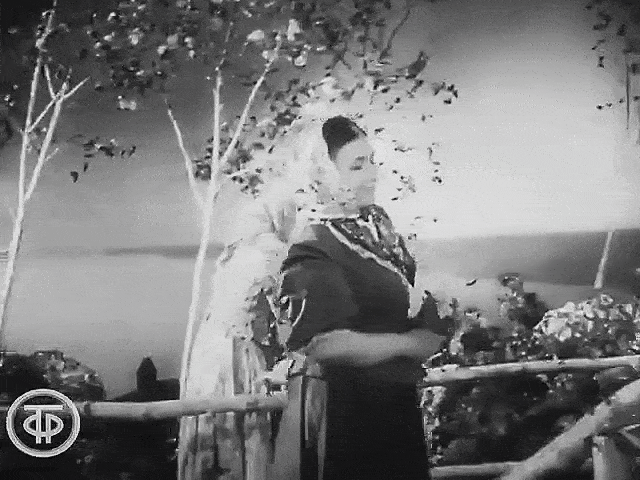
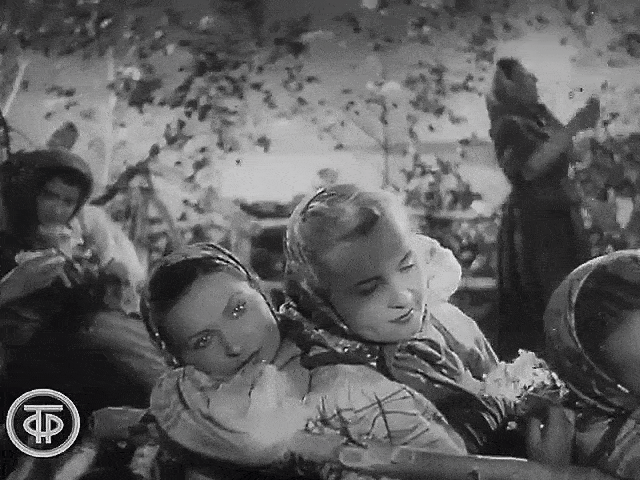

Lidia was a Russian folk singer, she became popular in the 1930s and performed all over Russia ❤️
#russia#russian#russian folk#russian folklore#фолклор#slavic#slavic culture#tradition#traditional#russian traditions#slavic tradition
23 notes
·
View notes
Text
Young Ukrainian girl seemingly from Poltava (Полтава) 1935❤️🇺🇦


(Colourised by me~)❤️
#ukraine#ukrainian#ukrainian folk#ukrainian culture#slavic#slavic culture#folk#folklore#tradition#ukrainian tradition#slavic tradition
204 notes
·
View notes
Text
Karička🇸🇰
By folk dance group Lúčnica❤️
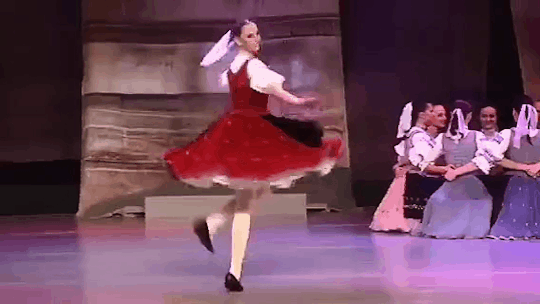
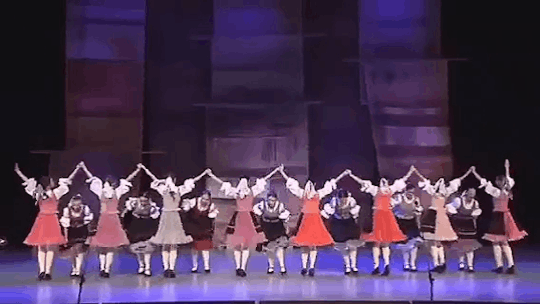


Karička is a traditional circle dance found today in Eastern Slovakia❤️
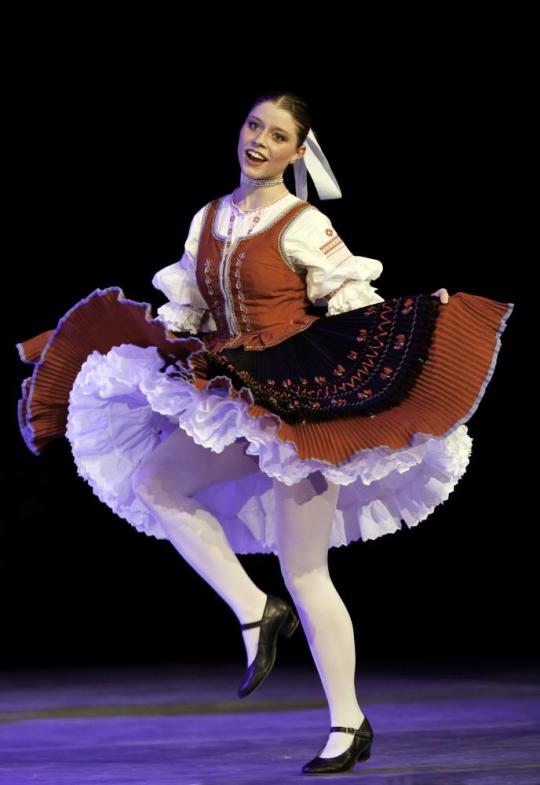

The dresses seem to be inspired from Zemplín region in South East of Slovakia❤️
#folk#folklore#folk dance#tradition#traditional dance#slovak#slovakia#slavic#slavic culture#slavic tradition
194 notes
·
View notes